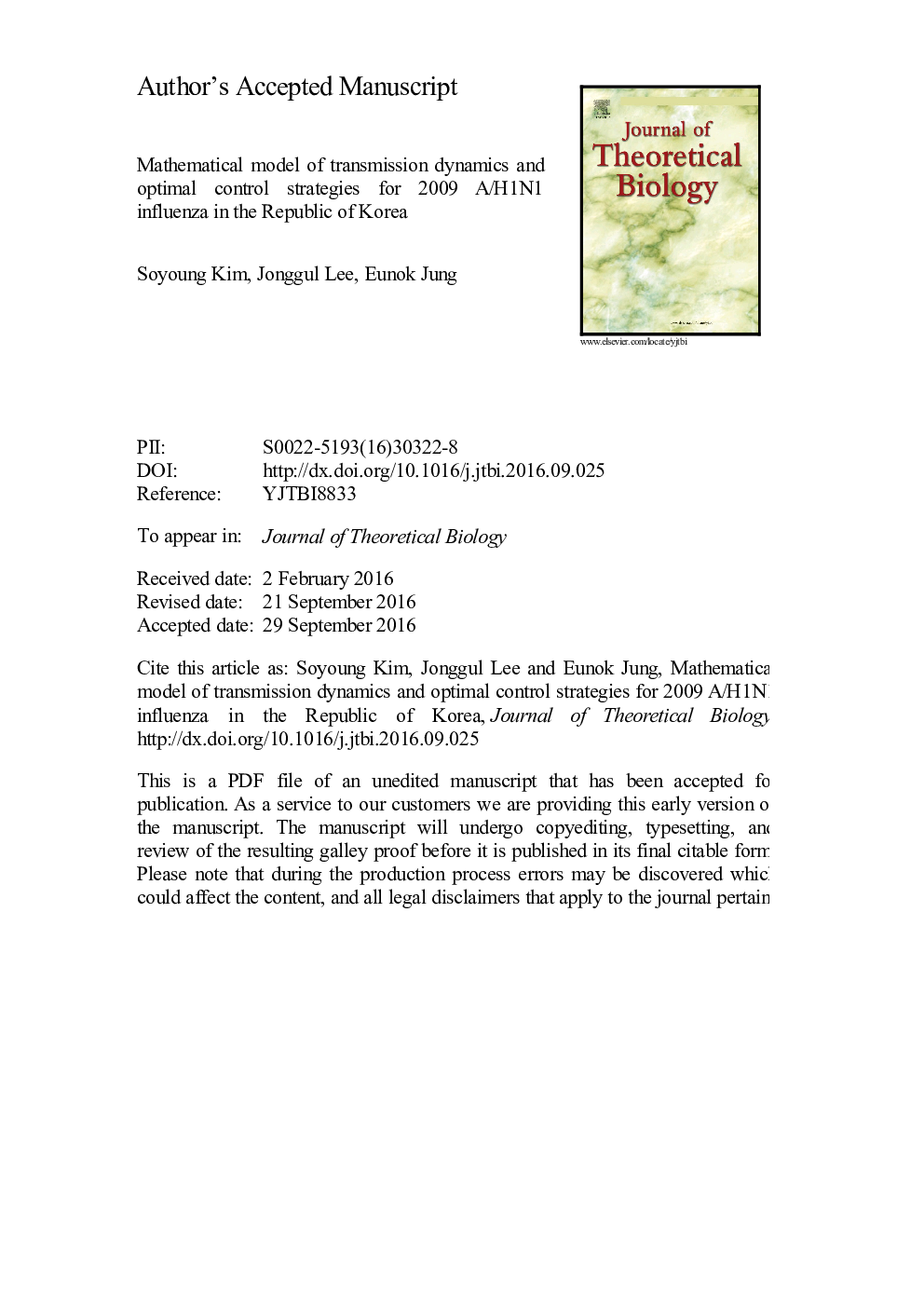| Article ID | Journal | Published Year | Pages | File Type |
|---|---|---|---|---|
| 6368800 | Journal of Theoretical Biology | 2017 | 34 Pages |
Abstract
A mathematical model for the transmission dynamics of the 2009 A/H1N1 influenza epidemic in the Republic of Korea is developed. The simulation period is separated into three consecutive periods based on the government's intervention strategies: the nonpharmaceutical strategy is used during Period 1. The nonpharmaceutical and antiviral strategies are executed during Period 2 and the vaccine strategy is added during Period 3. During Period 1, we estimate the reduction in the transmission rate due to the government's intervention policies as a difference between the data-fitted and uncontrolled transmission rate that is derived from the basic reproductive number, R0, of the model without intervention. This quantified reduced transmission rate is used as an upperbound of the nonpharmaceutical control for studying optimal control strategies, which is a new approach for determining the realistic upperbound of control. In this study, we also explore the real-time prediction of incidence using the mathematical model during the early stage of the epidemic. We investigate the impact of vaccination coverage and timing with respect to the cumulative incidence. The result implies that early vaccination plays a significant role for preventing the epidemic.
Related Topics
Life Sciences
Agricultural and Biological Sciences
Agricultural and Biological Sciences (General)
Authors
Soyoung Kim, Jonggul Lee, Eunok Jung,
